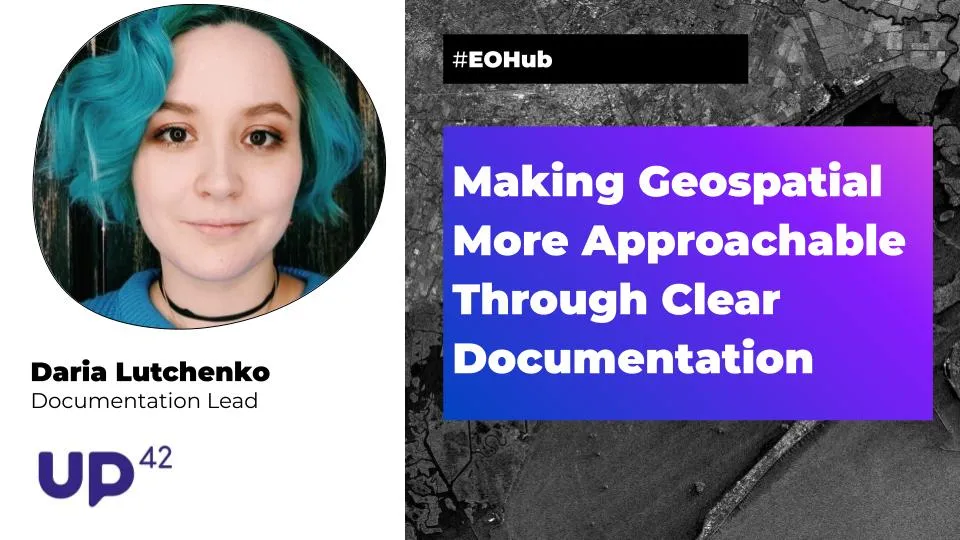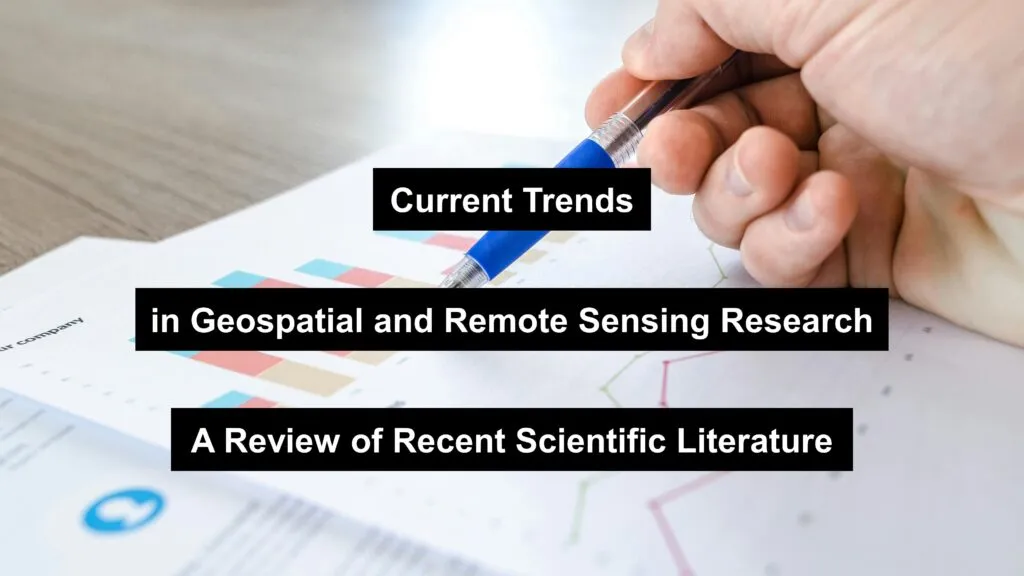
Current Trends in Geospatial and Remote Sensing Research: A Review of Recent Scientific Literature
Editor’s note: This article was written as part of EO Hub – a journalistic collaboration between UP42 and Geoawesome. Created for policymakers, decision-makers, geospatial experts and enthusiasts alike, EO Hub is a key resource for anyone trying to understand how Earth observation is transforming our world. Read more about EO Hub here.
The EO Hub section of our site is dedicated to highlighting the key trends and use cases within the EO and geospatial sector. But, what if we looked beyond industry and shifted our focus to science? What are researchers coming together to investigate? What areas of interest are being funded, researched, and published across the world?
To find out we analyzed 6000 research articles published on the Springer Nature website from January 2023 to June 2024—revealing some intriguing insights.
We used Springer’s API and targeted keywords like “geospatial” and “remote sensing“. By doing so, we discovered key research topics, current trends, and themes, and took note of the countries with the most published articles on specific topics.
So, what topics are researchers looking at? That’s where keywords come in.
Reviewing Research: Why are Keyword Trends So Telling?
Keywords are an excellent marker to describe trends in research areas. They tell us a lot about how the field is developing, inform business decisions, and detect changes in research priorities.
Our review aimed to find the most popular keywords and technologies featured in research paper titles and abstracts. We then visualized the locations of these papers per country on a world map.
At the forefront of this is Springer Nature, one of the leading international scientific publishers. Springer publishes over 200 articles each month focused on remote sensing and geospatial. From satellite imagery techniques to GIS applications and advanced data analysis methods, Springer is a useful resource for researchers, industry professionals, and curious minds alike.
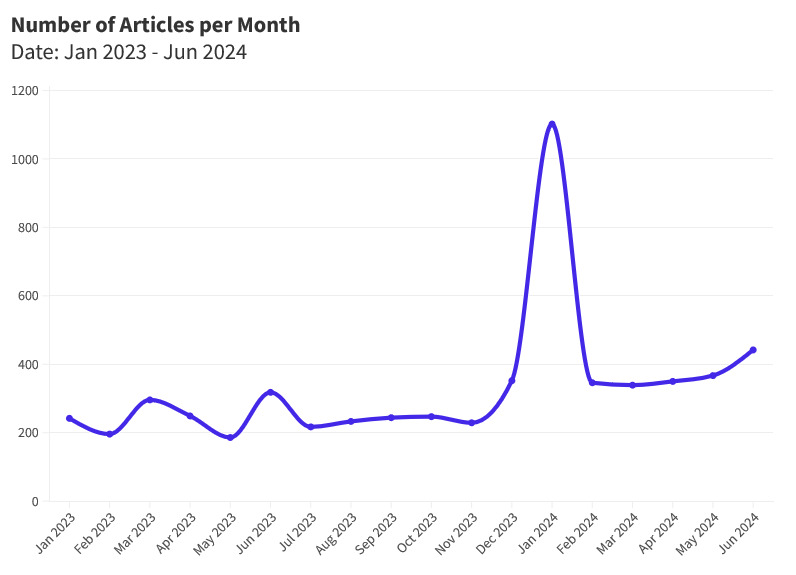
Keywords Shaping the Industry: A Snapshot of Geospatial and Remote Sensing Trends
Top Single Keywords:
The most popular keywords we found were:
-
“Predict” and “Prediction”
In recent scientific papers, keywords like “predict” and “prediction” frequently appear in titles and abstracts, highlighting the growing importance of this topic in environmental research. Thanks to tools in remote sensing, earth observation, and geospatial technology, scientists can now accurately predict climate change, weather patterns, natural disasters, and land deformations. This tells us that researchers are heavily focused on future-proofing our world and preparing us for what is yet to come. From the collection of 6000 articles analyzed from the selected timeframe, 1230 were found to include these keywords.
-
“Groundwater” and “Water”
Keywords like “groundwater” and “water” are essential in studying the effects of groundwater pumping in mining areas and changes in water levels due to droughts or floods. For example, in African countries, where water scarcity is a significant concern, sustainable water management is essential to maintain groundwater resources and support communities. Understanding these factors is key to inventing effective strategies for water use and conservation. In our review, a total of 2004 articles featured the specified keywords.
-
“Urban” and “Urbanization”
Why do keywords like “urban” and “urbanization” frequently appear in research papers focused on geospatial and remote sensing? This is because of the growing interest in monitoring and managing city growth and its impacts. These terms often relate to the need for detailed analysis of urban areas (e.g. air quality or urban heat islands). Out of 6000 articles from the studied period, 1349 contained these keywords.
-
“Landslide”, “Erosion, “Soil”, Displacement”, “Movement”
Scientists frequently use keywords like “landslide”, “erosion”, “soil”, “displacement”, and “movement” to study the dynamics of the Earth’s surface and the factors contributing to land instability. These terms are essential for understanding natural hazards, soil degradation, and ground displacement, and critical for risk assessment or disaster management. 328 of the articles mentioned the keyword “landslide”, 361 talked about “erosion”, 1051 included the word “soil”, 63 used “displacement”, and 154 discussed “movement”. In total – almost 2000 mentions!
-
“Model” and “Modeling”
In the context of geospatial and remote sensing research, the keywords “model” and “modeling” are often used to describe the process of creating simulations and predictive tools that analyze spatial data and environmental changes. These terms are crucial for developing and testing hypotheses, and forecasting future conditions. An impressive number of 2931 mentions were detected in our research.

The top single keywords that occurred in the review of scientific literature
Top Keyword Phrases:
Now that we’ve taken a look at the single keywords currently trending, we wanted to cross-check this with keyword phrases that are shaping the research landscape. While individual keywords offer valuable insights into research trends, examining keyword phrases provides a more nuanced understanding of the current research landscape.
Our review points towards several dominant themes:
-
“Land Cover” and “Land Use”
The phrases “Land cover” and “Land use” appear as primary focus areas, underscoring the role of EO in mapping the Earth’s surface. Many articles address the topic of land use and land cover classification using EO, which supports development and enhances the accuracy of following GIS analyses. As many as 1925 articles contained these keyphrases.
-
“Remote Sensing”
We found that “Remote sensing” remains a cornerstone phrase, reflecting the continuous evolution of sensor technologies. These advancements enable more accurate and detailed data collection, revolutionizing our ability to monitor and analyze Earth’s systems. If we look at the occurrence of this phrase over the years, there has been over a fivefold increase in frequency of use between 2006 and 2023. “Remote sensing” keyphrase occurred 1203 contained in revised articles.

-
“Climate Change”
The phrase “Climate change” dominates research papers due to its general impact on ecosystems and the need to address its effects. This popularity results from its influence on everything from weather patterns to human health, becoming an interdisciplinary study. This time 763 articles contained this keyphrase.
-
“Machine Learning” and “Neural Network”
The increasing frequency of phrases like “Machine learning” and “Neural network” highlights a growing trend toward AI-driven data analysis in recent years. Computational techniques, boosted by platforms such as UP42, improve the industry’s ability to handle and interpret BIG data. Among the 6,000 articles reviewed from the period in question, 745 contained the mentioned keyphrases.
-
“Water Resources”, “Groundwater Resources” and “Water Quality”
We noticed that keyword phrases such as “Water resources”, “Groundwater resources”, and “Water quality” have remained a high priority in recent years. Water resource management appears to be a significant topic from the perspective of scientists and the volume of research conducted on this subject. Of the 6000 articles examined from the specified period, 618 included these keyphrases.

The top keyword phrases that occurred in the review of scientific literature
Visualizing the Global Footprint of Geospatial Exploration
Now that we’ve explored the kinds of keywords being used in scientific literature, we wanted to know, where are the most scientific articles being produced?
We tried to answer this question by creating choropleth maps on the number of articles published by each country.
To craft these visuals, we were inspired by the Geoawesome article “How to Create Choropleth Map in Excel in Just 3 Minutes”.
Let us know if you’ve created similar maps from your own analysis, we’d love to see them!
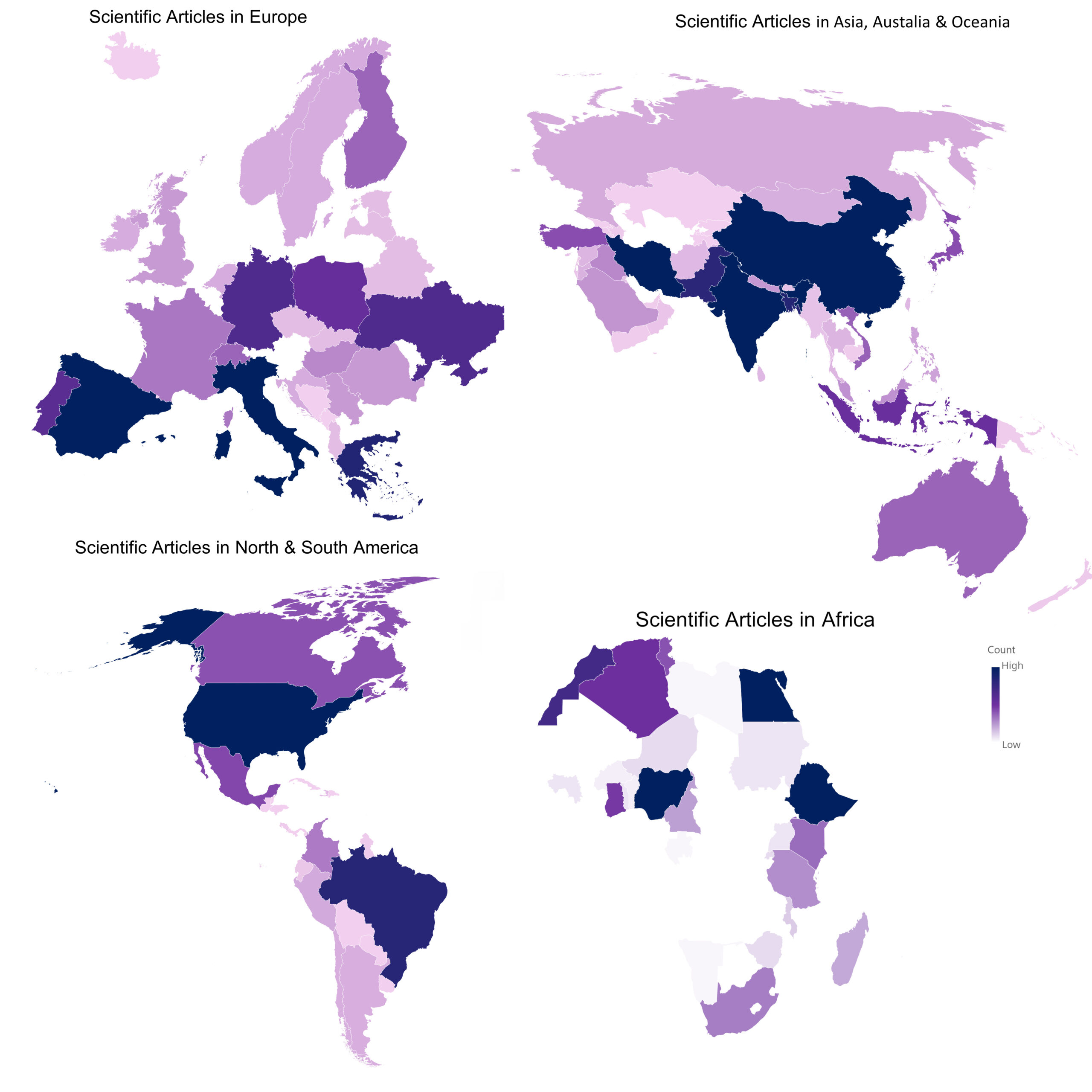
We created choropleth maps on the number of articles published by each country!
Regional Trends: What Do the Choropleth Maps Tell Us?
Research priorities in remote sensing and geospatial sciences demonstrate regional variations, reflecting each continent’s unique challenges, resources, and development trajectories.
For example, European and American countries invest heavily in research related to remote sensing using satellite imagery, artificial intelligence solutions, and climate change.
This continental diversity in research focus not only reflects regional priorities but also highlights the versatility and critical importance of remote sensing and geospatial sciences in addressing a wide array of global challenges.
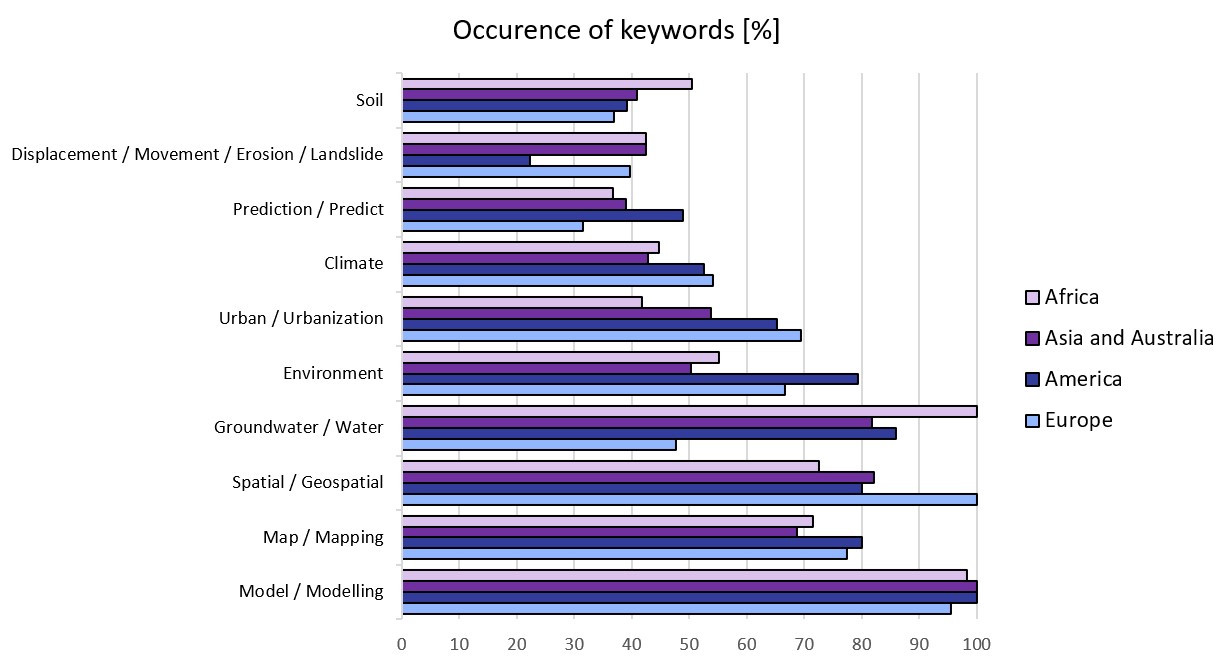
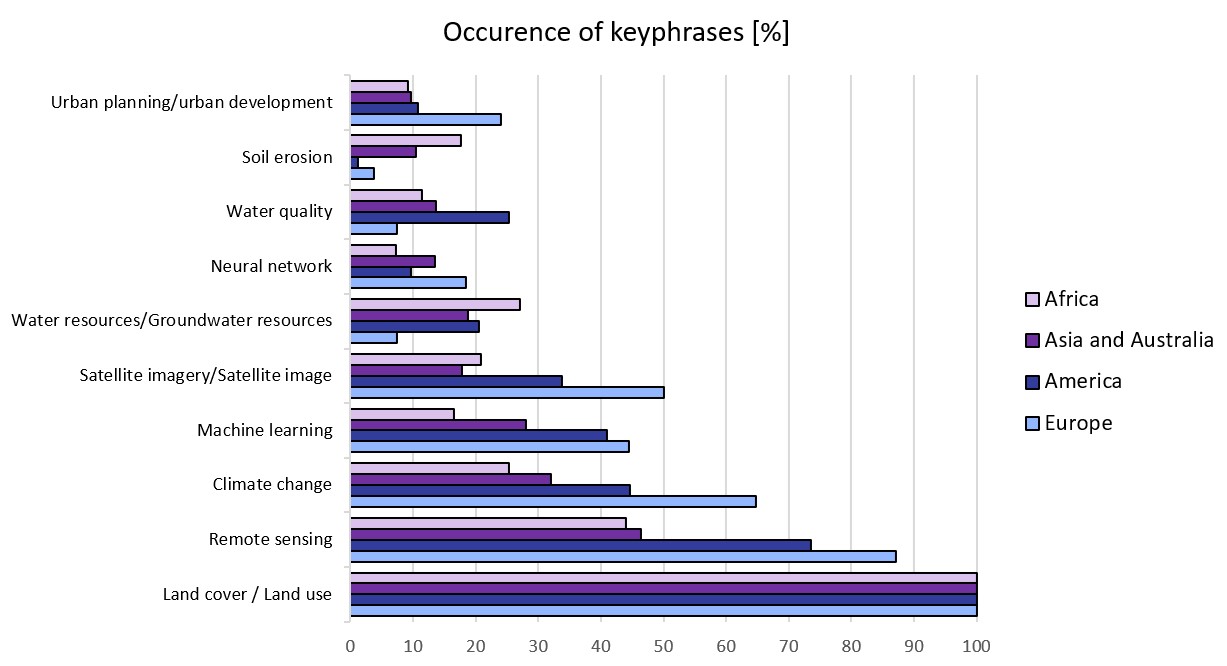
Analyzing Technological Trends
Next, we looked a little further and reviewed the occurrence of keywords related to technologies. From our analysis, it’s clear that remote sensing technology consists of various intermediate techniques, all unified by the common goal of observing and understanding our planet.
AI-based technologies, including machine learning and deep learning, are supporting various industries by improving data processing and interpretation. Remote sensing, integrated with AI, helps in interpreting geospatial data and expanding possibilities across diverse applications.
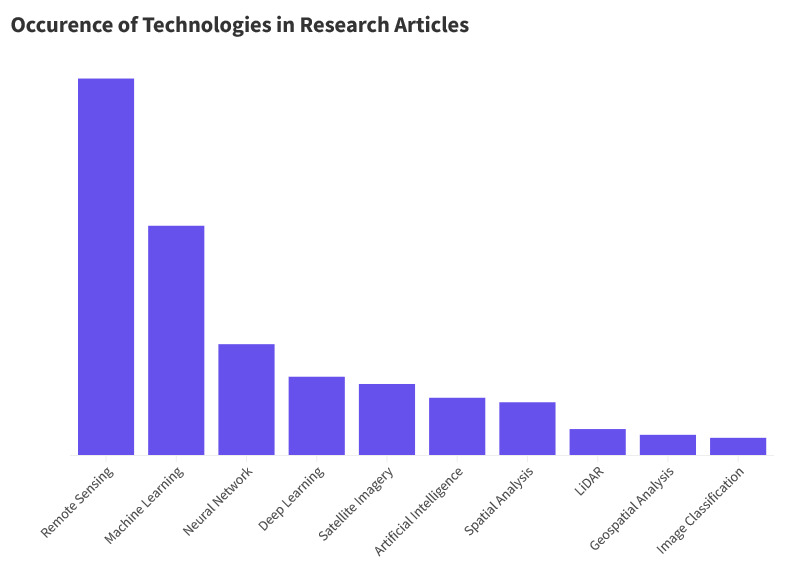
Geospatial Intelligence: Shaping a Sustainable Future
What did we find? Researchers are spending their time and energy looking into a clear cluster of topics in our ever-changing world.
Our analysis of 6,000 articles from Springer Nature shows that the geospatial and earth observation industry is focused on finding solutions for climate change, rapid urban development, and damaging land changes. It’s safe to say that from our research, researchers believe EO and AI hold the potential to address these major global challenges.
Now, more than ever, the focus is on the relationships between human activities, natural systems, and climate patterns. Our research underscores the geospatial and remote sensing industries’ role in creating a sustainable future, offering smart solutions to pressing global issues.
Are you researching some of the areas mentioned above? Get in touch to share your findings!
Did you like the article? Read more and subscribe to our monthly newsletter!






